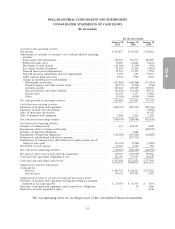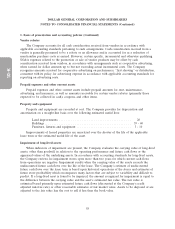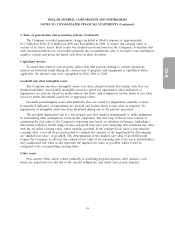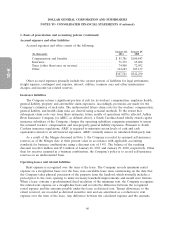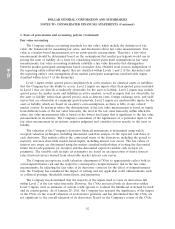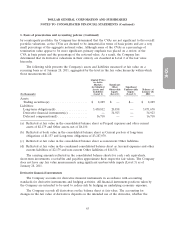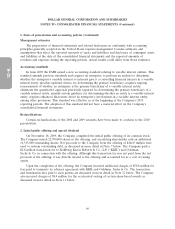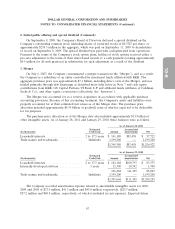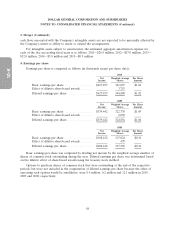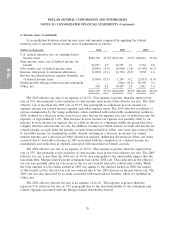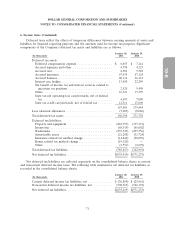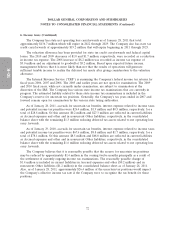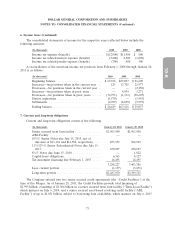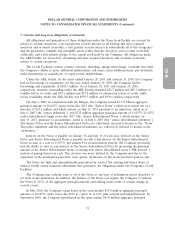Dollar General 2010 Annual Report Download - page 143
Download and view the complete annual report
Please find page 143 of the 2010 Dollar General annual report below. You can navigate through the pages in the report by either clicking on the pages listed below, or by using the keyword search tool below to find specific information within the annual report.
10-K
DOLLAR GENERAL CORPORATION AND SUBSIDIARIES
NOTES TO CONSOLIDATED FINANCIAL STATEMENTS (Continued)
1. Basis of presentation and accounting policies (Continued)
Share-based payments
The Company recognizes compensation expense for share-based compensation based on the fair
value of the awards on the grant date. Forfeitures are estimated at the time of valuation and reduce
expense ratably over the vesting period. This estimate is adjusted periodically based on the extent to
which actual forfeitures differ, or are expected to differ, from the prior estimate. The forfeiture rate is
the estimated percentage of options granted that are expected to be forfeited or canceled before
becoming fully vested. The Company bases this estimate on historical experience or estimates of future
trends, as applicable. An increase in the forfeiture rate will decrease compensation expense.
The fair value of each option grant is separately estimated and amortized into compensation
expense on a straight-line basis between the applicable grant date and each vesting date. The Company
has estimated the fair value of all stock option awards as of the grant date by applying the
Black-Scholes-Merton option pricing valuation model. The application of this valuation model involves
assumptions that are judgmental and highly sensitive in the determination of compensation expense.
The Company calculates compensation expense for nonvested restricted stock and similar awards
as the difference between the market price of the underlying stock on the grant date and the purchase
price, if any, and recognizes such amount on a straight-line basis over the period in which the recipient
earns the nonvested restricted stock and similar awards.
Store pre-opening costs
Pre-opening costs related to new store openings and the related construction periods are expensed
as incurred.
Income taxes
Under the accounting standards for income taxes, the asset and liability method is used for
computing the future income tax consequences of events that have been recognized in the Company’s
consolidated financial statements or income tax returns. Deferred income tax expense or benefit is the
net change during the year in the Company’s deferred income tax assets and liabilities.
The Company includes income tax related interest and penalties as a component of the provision
for income tax expense.
Income tax reserves are determined using a methodology which requires companies to assess each
income tax position taken using a two step process. A determination is first made as to whether it is
more likely than not that the position will be sustained, based upon the technical merits, upon
examination by the taxing authorities. If the tax position is expected to meet the more likely than not
criteria, the benefit recorded for the tax position equals the largest amount that is greater than 50%
likely to be realized upon ultimate settlement of the respective tax position. Uncertain tax positions
require determinations and estimated liabilities to be made based on provisions of the tax law which
may be subject to change or varying interpretation. If the Company’s determinations and estimates
prove to be inaccurate, the resulting adjustments could be material to the Company’s future financial
results.
65


